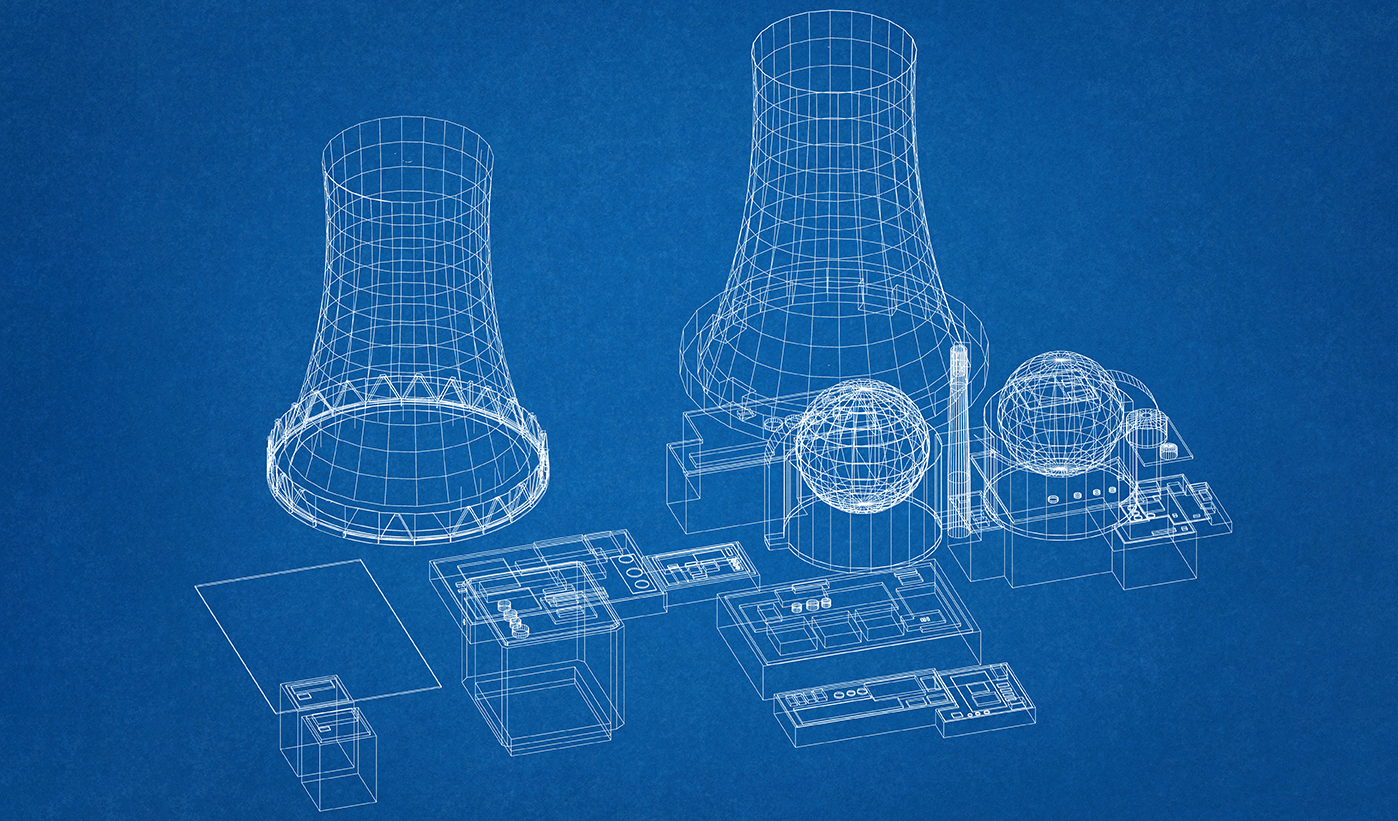Design and optimisation of structural components in nuclear power plants
Timeline
2011-2022Sector
NuclearScope
Design and optimisation of structural components in nuclear power plantsBACKGROUND
The nuclear sector requires applying specific structural calculation methodologies and a knowledge and monitoring of the specific regulation for building nuclear plants. SOLUTE meets these requirements and therefore, contributes their experience to provide services in the design and optimisation of components for this sector.
A key aspect in the design of nuclear plants is the civil and structural design, which must be analysed in order to guarantee its integrity against any severe external event without ever compromising the reactor. To achieve this objective, very strict safety requirements are implemented, so the analysis of these structures can only be governed by criteria recognised by nuclear regulatory agencies such as the NRC (Nuclear Regulatory Commission).
Thanks to a proper design and optimisation of structural components, we are able to reduce costs and improve the competitiveness in the market, and especially, safety against radiation leaks and guarantee the nuclear load is kept inside a space that is restricted and protected against accidents or natural disasters such as earthquakes or hurricanes.
RESULTS
The resulting information is specified in the necessary documentation for the subsequently construction and technical justification. In other words, detailed drawings, installation specifications and technical documents that include all the analyses. The latter will be used to justify the viability of these structures. The work may be multidisciplinary and therefore must involve all teams in the issuance of results or at least identify any impact the design may have on another structure or discipline.
EXPERIENCE
Since 2011, SOLUTE has participated in the construction of a commercial nuclear plant, undertaking the design and analysis of the shield building that surrounds the containment building; that is, the structural component that contains the nuclear reactor. SOLUTE also participates in the design of other components and auxiliary structures of the building in tasks that can be extrapolated to any building in the nuclear sector and even other industrial sectors.
The structural calculation is carried out using Finite Elements models using tools such as GTSTRUDL and ANSYS, with static and dynamic analyses.
METHODOLOGY
For a plant model to be commercial, it must have been certified by the competent national nuclear regulatory agency prior to its construction. Approved design guides are essential, both of the concrete as well as steel structures, which are supported by nuclear regulations or standards specifying the methodology used for its analysis (ACI, ANSI - AISC N690, AISI, AWS…).
When evaluating a design, we must consider if we are undertaking a modification or creating a new design, so initially, we must review the inputs, drawings and 3D model as well as all the information included in the guides and regulation prior to evaluating the possible design solutions.
Likewise, we must consider the impact on other structures or disciplines inside the plant and communicate these if applicable. In another sense, it may occur that the modification of a structural component impacts the structure and in this case, we must justify that the existing design supports such modification. To accomplish this, we must re-evaluate the design with this change as input.
The structural calculation is carried out through the Finite Elements models using tools such as GTSTRUDL and ANSYS, with static and dynamic analyses. The load cases must take the dead load and the operating conditions of the plant into account (thermal load, hydrostatic pressures, etc.), installation conditions and also, accidents as well as natural disasters such as earthquakes.
Seismic forces are obtained from the finite elements three-dimensional models response spectrum analysis of the entire nuclear plant. The finite elements analysis is supplemented with more refined local analytical calculations, following the specific codes and standards.
Eólica
Predicción energética y meteorológica para operadores renovables
Servicio de predicción meteorológica y energética a través del entrenamiento de algoritmos de inteligencia artificial.
Software
Integración y despliegue continuos
Ramas de la ingeniería de software orientadas a aumentar la calidad y frecuencia de la iteración en las soluciones desarrolladas y a tener un mayor control sobre todas las etapas que comprenden el ciclo de vida del software.
